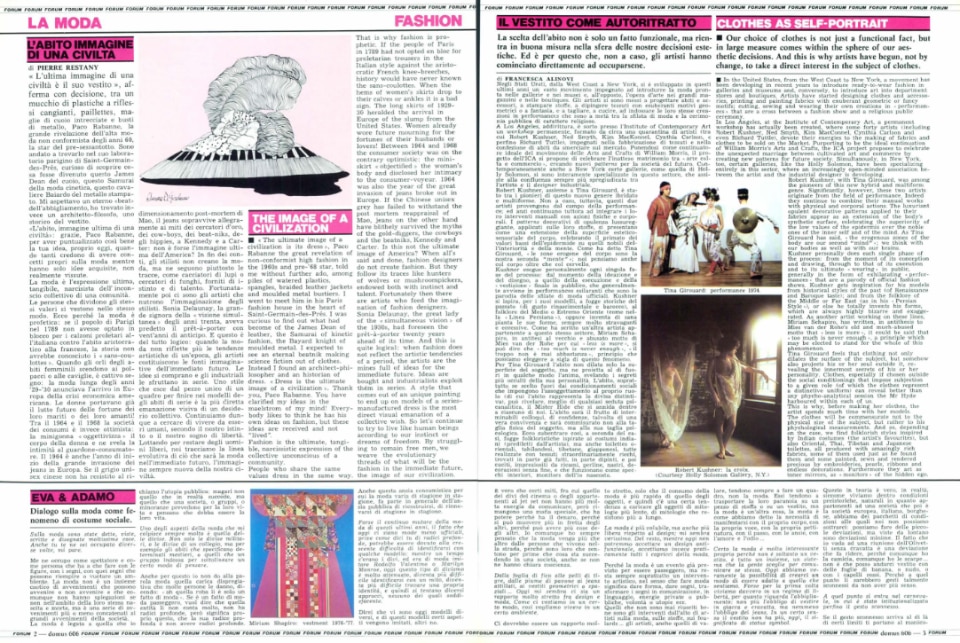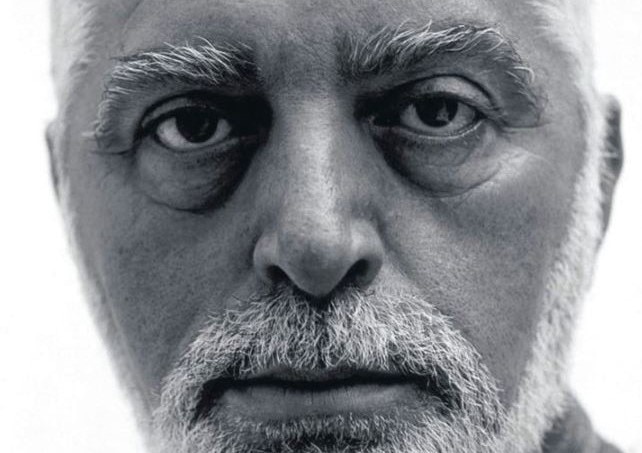“Architecture and fashion are meeting on the terrain of a function that goes beyond them: that of the presence of the human body, a function that wants to renew itself,” we read in Domus 460. It is 1968 and the occasion is the presentation of a new boutique in Milan; among the architects is a young Ugo La Pietra. The article mentions a stylist, at the time the standard-bearer of a renewal that started in Paris: Paco Rabanne, “an architect of women as weapons, whose revolution in dress design directly aimed at emancipating the role of the female body”. The Spanish-born designer, who studied architecture before turning to fashion, has been mentioned several times in the pages of Domus over the years. The illustrious art critic Pierre Restany dedicated to the Spanish-born stylist one of his acclaimed editorials in our monthly magazine, “The image of a civilisation”, in 1980, after meeting “the samurai of kinetic fashion” in his Saint-Germain-des-Prés studio. Restany described him as “a philosopher architect and a dress historian”: we republish that article as a tribute to Paco Rabanne, born Francisco Rabaneda Cuervo, who passed away on 3 February 2023, just a few days before what would have been his eighty-ninth birthday.
Dress is the ultimate image of a civilization
“The ultimate image of a civilization is its dress”, Paco Rabanne the great revelation of non-conformist high fashion in the 1960s and pre-'68 star, told me without further ado, among piles of watered plastics, spangles, braided leather jackets and moulded metal bustiers. I went to meet him in his Paris fashion house in the heart of Saint-Germain-des-Prés. I was curious to find out what had become of the James Dean of leather, the Samurai of kinetic fashion, the Bayard knight of moulded metal. I expected to see an eternal beatnik making science fiction out of clothes. Instead I found an architect-philosopher and an historian of dress.
“Dress is the ultimate image of a civilization”. Thank you, Paco Rabanne. You have clarified my ideas in the maelstrom of my mind! Everybody likes to think he has his own ideas on fashion, but these ideas are received and not “lived”.

Fashion is the ultimate, tangible, narcissistic expression of the collective unconscious of a community. People who share the same values dress in the same way.
That is why fashion is prophetic. If the people of Paris in 1789 had not opted en bloc for proletarian trousers in the Italian style against the aristocratic French knee-breeches, history would have never known the sans-coulottes. When the hems of women's skirts drop to their calves or ankles it is a bad sign. The long skirts of 1929-30 heralded the arrival in Europe of the slump from the United States. Women already wore future mourning for the fortunes of their husbands or lovers! Between 1964 and 1968 the consumer society was on the contrary optimistic: the miniskirt “objectified” the woman's body and disclosed her intimacy to the consumer-voyeur. 1964 was also the year of the great invasion of jeans broke out in Europe. If the Chinese unisex grey has failed to withstand the post mortem reappraisal of Mao, jeans on the other hand have blithely survived the myths of the gold-diggers, the cowboys and the beatniks, Kennedy and Carter. Is this not the ultimate image of America?
When all's said and done, fashion designers do not create fashion. But they follow its traces like hunters of wolves or mushroompickers, endowed both with instinct and talent. Fortunately then there are artists who feed the imagination of fashion designers. Sonia Delaunay, the great lady of the “simultaneous vision” of the 1930s, had foreseen the prêt-à-porter twenty years ahead of its time. And this is quite logical: when fashion does not reflect the artistic tendencies of a period, the artists are the mines full of ideas for the immediate future. Ideas are bought and industrialists exploit thém in series. A style that comes out of an unique painting to end up on models of a series-manufactured dress is the most direct visual emanation of a collective wish. So let's continue to try to live like human beings according to our instinct or dreams of freedom. By struggling to remain free men, we weave the evolutionary threads of what will be the fashion in the immediate future, the image of our civilization.
Opening image: @pacorabanne Instagram official account


